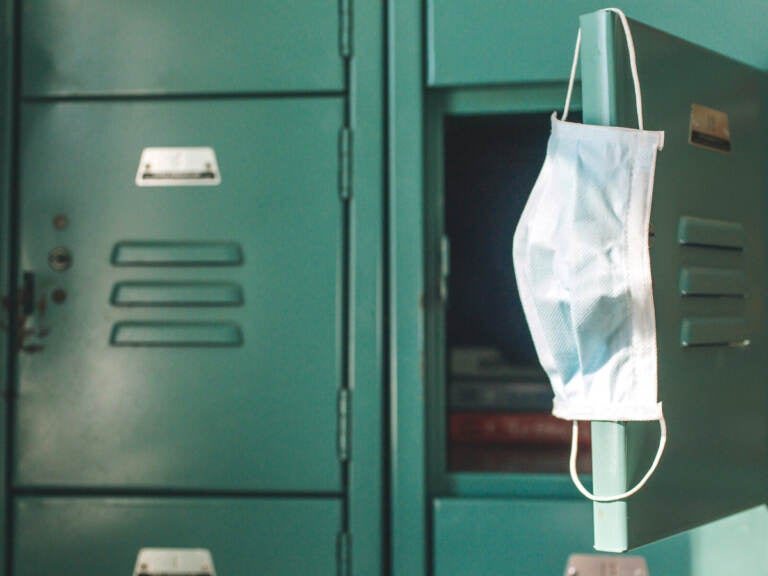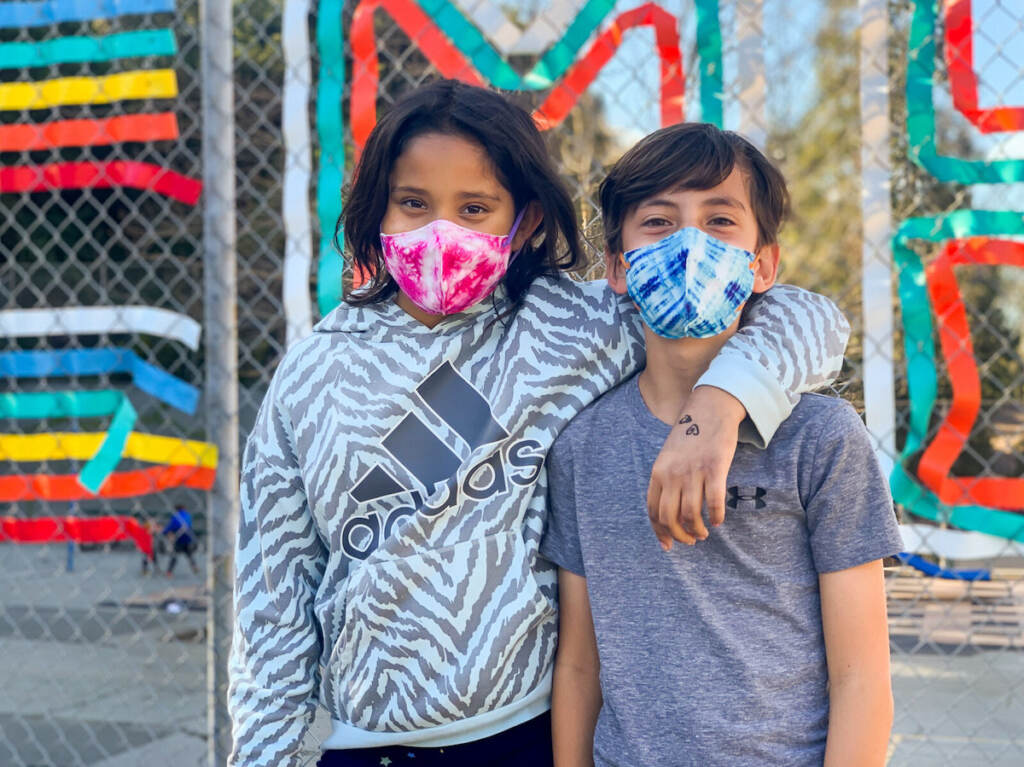Some kids are happy to ditch the mask at school, others struggle with the transition

Adapting to wearing masks was not fun for many kids, but ditching them can also be disconcerting. Kids might need some help dealing with the adjustment. (Jena Ardell/Getty Images via NPR)
Many kids across the country now have the option to show off their smiles throughout the day. It’s a change for children who have gotten used to wearing face coverings since returning to in-person classes, and may be disconcerting for some.
In recent weeks every state except Hawaii has lifted its indoor mask mandate for schools. But implementation across the country varies. For example, if you’re a student in Minnesota you still have to wear a mask on a school bus. And some districts like Boston and San Diego are continuing mask requirements indoors for the moment. Others still encourage masking even though it’s not required.
Some kids have welcomed the changes with relief. Grace Richards is thrilled she doesn’t have to wear her Hello Kitty mask to second grade at her elementary school in Petaluma, Calif.
“I can finally take it off and we can finally see everybody’s personality!” said Richards, smiling. “I know I’m going to be safe because we have to stay an arm’s distance away from each other while eating and drinking.”
That’s not exactly true. Richards is still at risk if she’s in the same room as someone who’s infected with COVID-19. Social-distancing protocols do help lower transmission, though, which is why Garrett Glass is ditching his mask in his fifth grade class in San Anselmo, Calif.
“We sit, like, three feet apart,” said Glass. “So I’m not that worried about getting it in class.”
Glass wasn’t even really phased when one of his classmates tested positive for the virus just last week. “I’m pretty sure everybody in our class is fully vaccinated, so I’m not that scared,” he said.

(Lesley McClurg/NPR)
Yet many kids might not understand why it’s suddenly safe to show their face after being told over and over that masks save lives. And some families –especially those with a high-risk household member— may prefer to keep masking up.
In fact, though cases are generally down around the country, local conditions vary and there are still communities where shedding a mask could be an infection risk. But going against the grain at school, as we all know, is no fun.
Some children at a playground in Oakland are pretty conflicted about the whole thing. Ten-year-old Kenley Gupta, a fourth grader, doesn’t like her mask, but she’s not quite ready to toss it.
“Most of the time it’s really uncomfortable and it keeps sliding down my nose,” said Gupta. “It’s just a burden hanging over me.”
Yet, she says, it’s also scary to take off her pink, tie-dyed mask. “The virus is still simmering down so I just think it’s best to be safe.”
Gupta says there’s going to be lots of kids in each class at her school — “with no masks on, and people are going to be sneezing and coughing and there’s going to be a lot of germs.”
Eleven-year-old Tabitha Kadel couldn’t agree more. She’s still doubling down by wearing both a cloth and a surgical mask to her school in Alameda, Calif.
There’s good data showing masks do protect kids, though it depends on whether the mask fits, the type of mask and the variant you’re dealing with. Kadel also highlights some other pros and cons.
“I appreciate that it hides my zits,” Kadel said. “But it’s hard to breathe when I’m running in PE and it’s difficult to see what people look like.” She is going to wait a week or two before showing her full face.
She won’t be alone. Health officials in California are still “strongly recommending” mask wearing in K-12 schools, rather than simply advising it or making it optional.
Changing mask protocols could be hard for some kids to understand.
“It’s natural for children to feel some anxiety,” said Jennifer Louie, a clinical psychologist at the Child Mind Institute, a nonprofit specializing in kids’ mental health. “They might need time. Parents can give them reassurance and support.”
Louie recommends parents transition kids slowly by asking them lots of questions about how they feel, and says it’s important to validate whatever the child says.
“Like, ‘Oh, yeah, that makes sense, that you’re nervous. I’m a little nervous, too. We’ve been doing it this way for so long,'” said Louie. “And that can really help ease their anxiety. ‘Oh, the grown-ups have thought about this. It makes sense.'”
She says kids need a thorough explanation of why the situation is safer now. Parents can talk about how case rates have dropped substantially and vaccines are widely available. These are details that help kids understand the bigger picture.
The playground could become contentious as some kids ditch masks and others keep them on. Louie suggests getting ahead of impending peer pressure by explaining that risk is different for each family.
“For example, ‘We can only control what we do. And so this is what we’re doing,'” said Louie. “And, you know, we can talk about it. Our plan is a flexible plan. We can always change it based on, you know, how we’re feeling.”
If younger children experience teasing Louie recommends parents tell their kids to enlist a grown-up to help. For older kids the best tactic is to ignore or distract a bully because teasing only works if an oppressor gets a rise. You can help your kid come up with a few things they can say to prevent a bully from getting what they want.
“Because if you take the bait you will get eaten,” said Louie. “The overall message is you got to do things that make it less fun for the bully to do it.”
She says it’s also probably wise to warn kids they might have to put their masks back on if another variant emerges and cases surge.




